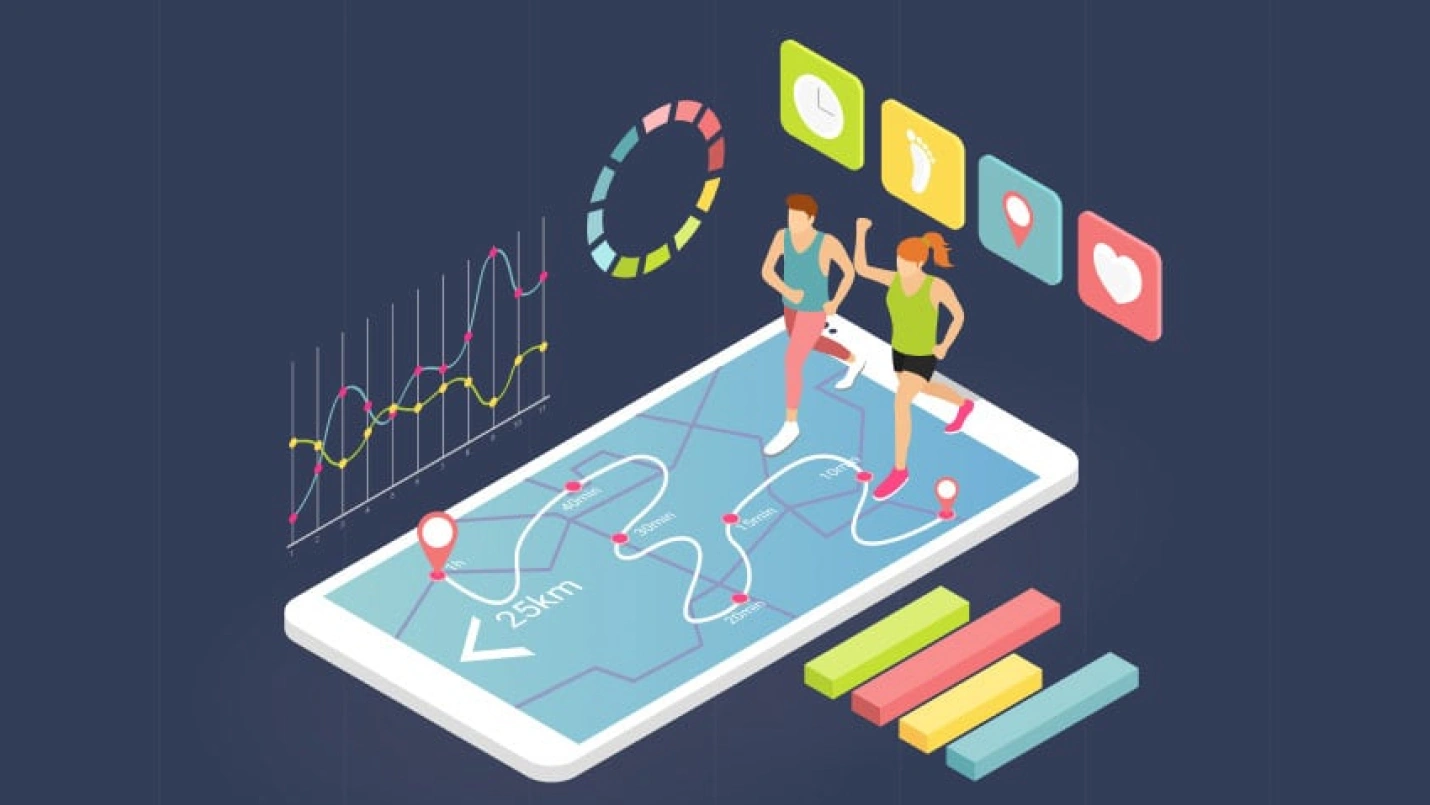Summary: The more people focus on fitness; the more people will want to monitor their progress. Fitness apps, therefore, form an essential part of our lives. Perhaps you are also seeking to build your own? This write-up answers all your worries about the essential features of a successful fitness app.
There has been a surge in the trend towards fitness and everything related to it. Fitness is almost an obsession for a considerable section of the global population. Call it a “status symbol,” a “fad,” or an increased consciousness in the light of the high occurrence of chronic diseases, or maybe the pandemic, the fact is – Fitness as a daily preoccupation is here to stay. It is a path, a journey to a sound body and mind – a feeling of general wellness. Users now emphasize facilities that let them stay fit. At home, the pandemic has further infused energy into this approach, and people will now do anything to access health advice solutions from home.
At-home memberships, wearables, virtual experts & coaches all seem to have gained strength. And therein lies the popularity of fitness apps and the curiosity on how to build a fitness app. Reports indicate that-
“The global fitness app market size was valued at USD 1.1 billion in 2021 and is expected to expand at a compound annual growth rate (CAGR) of 17.6% from 2022 to 2030. The spreading COVID-19 pandemic led to nationwide lockdowns followed by social distancing norms, thereby aiding the transition from traditional studios and gyms to virtual fitness.” (Grand View Research)

We respect your privacy. Your information is safe.
What is a Fitness App?
A fitness app is a tech solution – that assists users in improving their overall health & being. Therefore it addresses aspects related to food habits, activity, general well-being, and mental health. As users became more conscious over time, fitness apps have come to manage a greater number of features.
Since the pandemic, the need for ‘at-home’ meal plans, fitness details, workout guidance, and mental calmness increased. And there has been a phenomenal rise in the curiosity on how to build a fitness app. The Grand View Research, Inc. report indicates that the global mHealth market is growing at a CAGR of 44.2% and is expected to reach 111.8 billion US dollars by 2025.
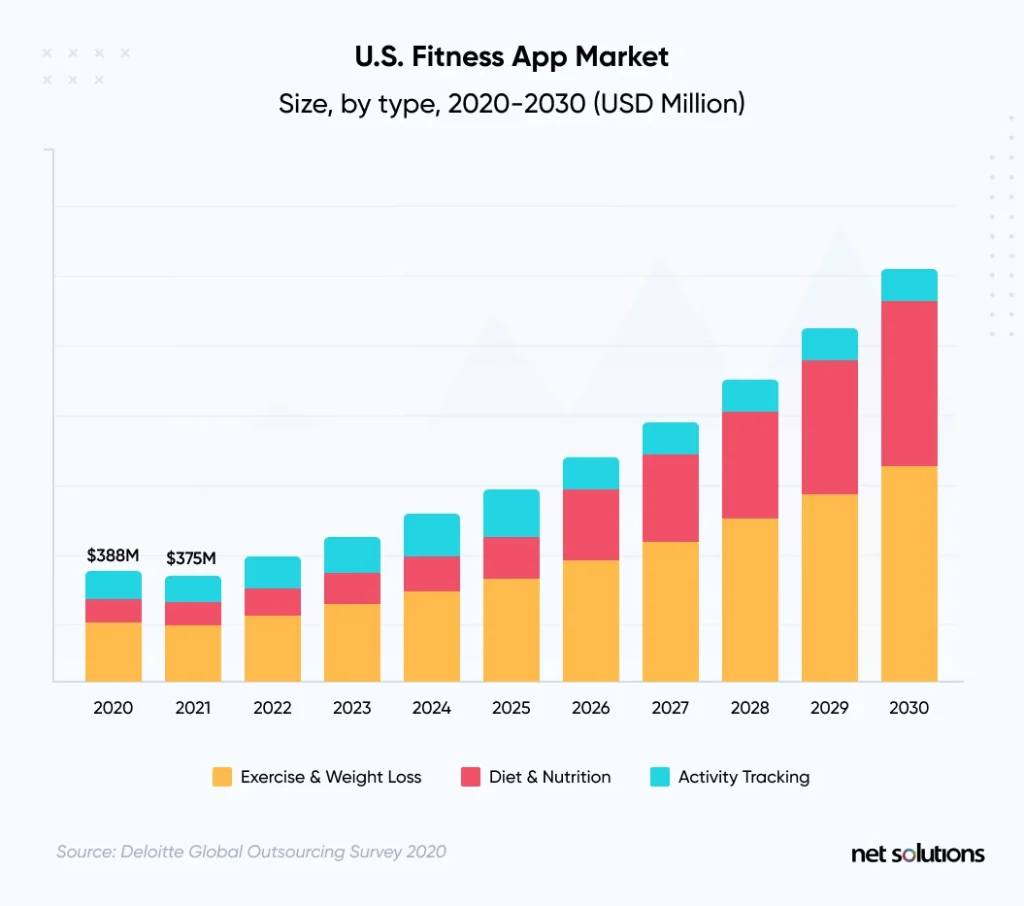
Smart applications have raised wellness guidelines as users nowadays follow the best diet and exercise plans ready for use with just a simple tap. Look at what the data below from GlobeNewswire suggests:
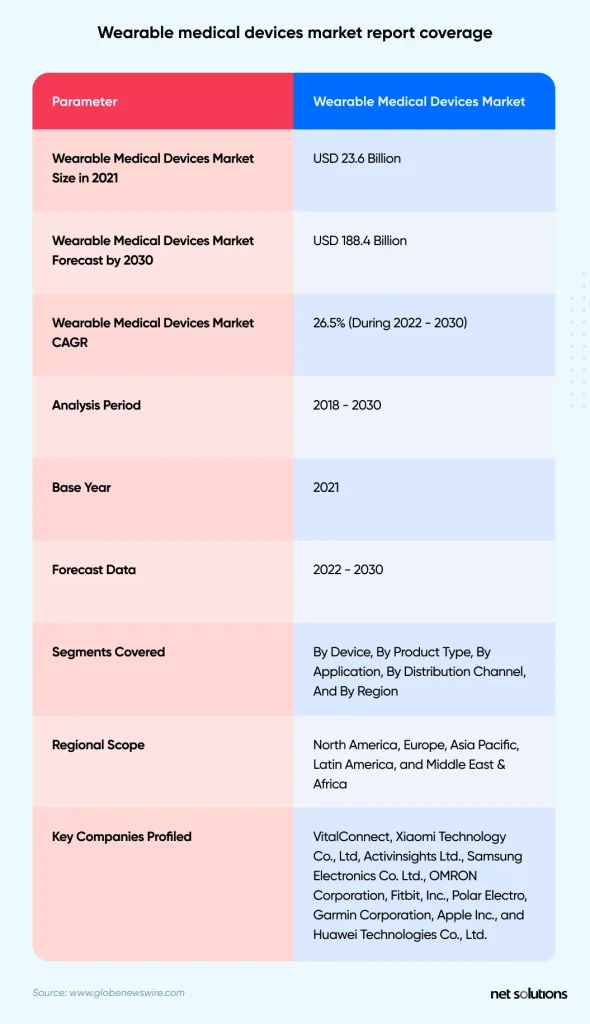
In sum,
“The global wearable medical devices market size is expected to reach the market value of USD 188.4 Billion by 2030 from USD 23.6 Billion in 2021, growing at a CAGR of 26.5% during the forecast period from 2022 to 2030, as per the report by Acumen Research And Consulting.” (Acumen Research & Consulting, in GlobeNewswire).
Types of Fitness Apps & Steps to Build one
Fitness Apps could be of various types – Activity tracking, Food tracking, Workout, Yoga, Meditation & Mindfulness, Nutrition/Diet/Meal Planning, Lifestyle, Hunger control, and Sleep Monitoring. When you start strategizing on how to build a fitness app, you need to keep the following steps in mind:
- Have an idea
- Consult professionals
- Do your research on audience & market
- Decide on the technology, tech stack, platform & tech partner
- Formulate the features
- Build your prototype and test it for viability
- Finalize the app development cost
- Decide on the ways to monetize the app
Once you decide how to build a fitness app and the steps you will follow, you need to list the basic and specialized features necessary for fitness app development.
Features for a successful Fitness App:
What use would your fitness app be if it didn’t cater to user comfort or didn’t add value for them? In the fitness mobile app development process, there are some basic features you need to cater to and some advanced specialized ones that give your app an extra edge over the competition. Let’s look at both below:
Basic Features to create a fitness app
These are the features that an app just cannot do without. They remain the same irrespective of the type of fitness app you want to create.
1. Registration and SignUp/Login
While this is a general feature applicable to all apps, when you build a fitness app, you might have to incorporate parameters like height, weight, health issues, and health goals (reducing weight, general nutrition, etc.). Users should also be able to sign up on the app, email, or maybe even some third-party social app. You can decide all this when you decide on your budget.
2. User profile
Typically, the user is prompted to add details like their bio, picture, and other personal information – food preferences, daily routine, work profile, and facility to make changes in their goals/information set in the beginning when they sign up. Modification of any password or name would also get accommodated here. Existing health issues or illnesses will have to be mentioned here. Sometimes it suits to have a fitness database from which the user can choose options while filling in their details. Users can then search for information on calories, food specifications, or custom workouts combining exercises from a list. Users get prompted to take action without really watching videos etc.
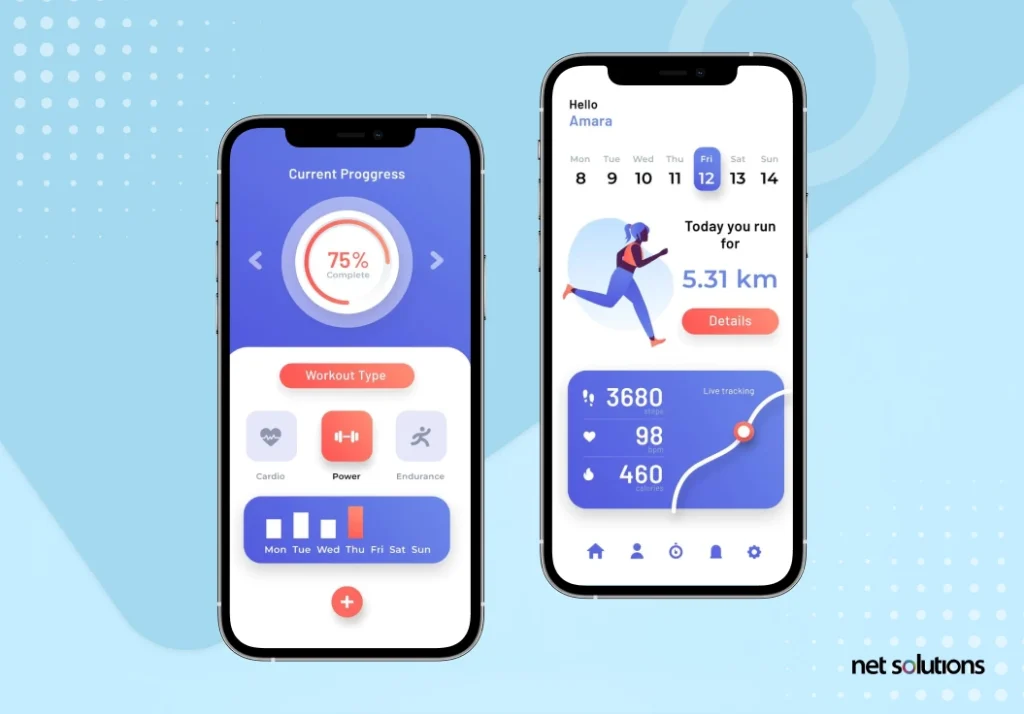
3. App-specific Menu & Dashboard
Depending on the goal of the fitness app development, there can be a menu to browse through the offerings of the particular app. Typically, users can utilize filters here to seek their needs per their required time, desired fitness levels, targeted body parts or problems, and specific instructor/coach/trainer if available. The dashboard will also depend on the genre of the fitness app. For example, a diet app could mention daily calories; a workout app could mention previous exercise minutes and the next day’s goals. This feature should ideally include statistics, goal statements, achievements, and a slot to make a schedule. Providing the user to maintain a diary here also helps.
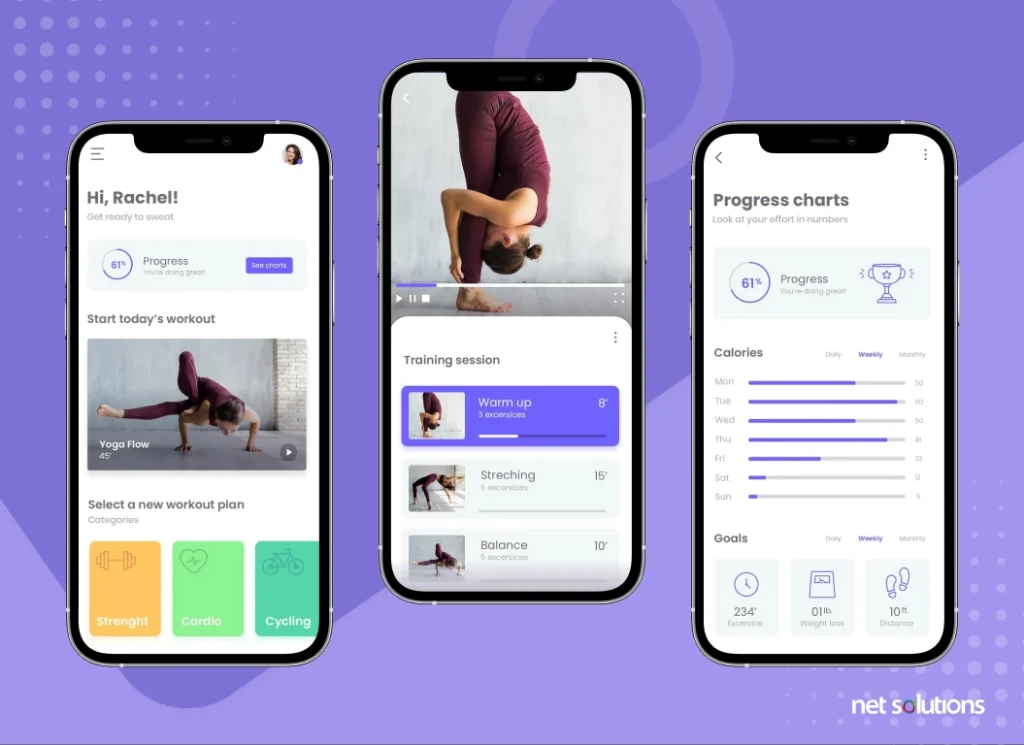
4. Payment facility
The basic features include the integration of a payment facility. When you create a fitness app, you need to add your payment gateway. Paypal, Stripe, and Braintree are some of the payment gateways used. Payment facilities should be easy to navigate & understand for users but also have a reminder system in case the user wants to opt for monthly/bi-monthly/quarterly/half-yearly payments. The user must be assured of secrecy & confidentiality while filling in details.
5. Third-Party App integration
This feature helps for general health and wellness – data from MyFitnessPal, for example, can be synced with Garmin’s API. Some workout apps can integrate Google Fit and Apple Health so that users get data on their nutrition, sleep, health, and physical activity. Fitness app users get a greater fitness tracking experience with enhanced functionality.
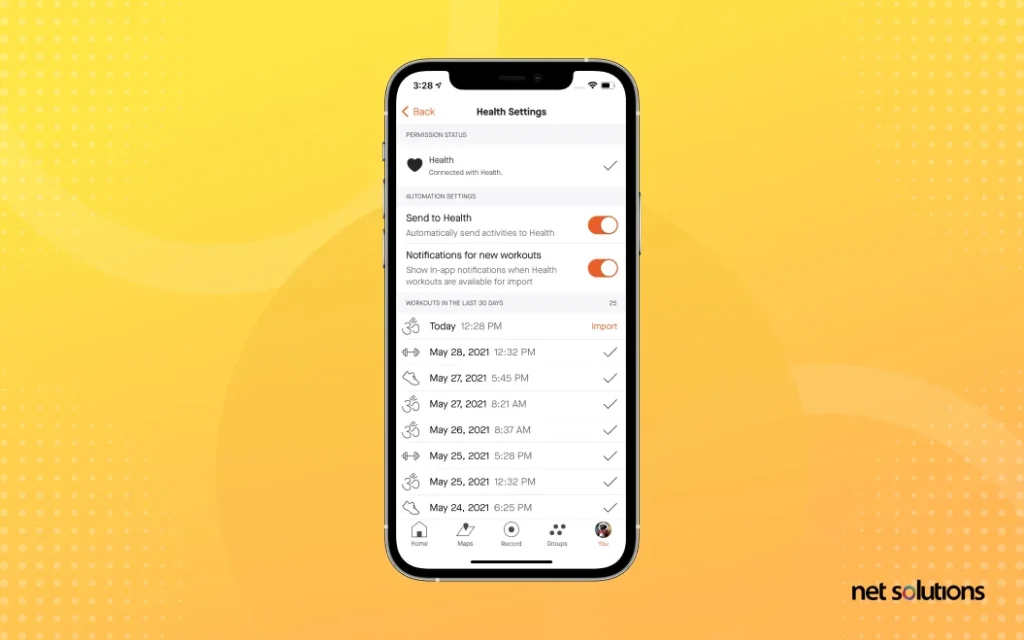
Advanced Features to build a fitness app
These extra and advanced features help you gain an edge over the competition. When you build a fitness app, you can decide whether you want to offer these features for free or with an additional subscription.
Some of these are-
1. Customized Diet Plans
Fitness apps simulate having a fitness coach in the gym. A significant feature you can incorporate into a fitness app is customized diet plans. It will assist users in creating a diet plan best suited to their body & daily activities.
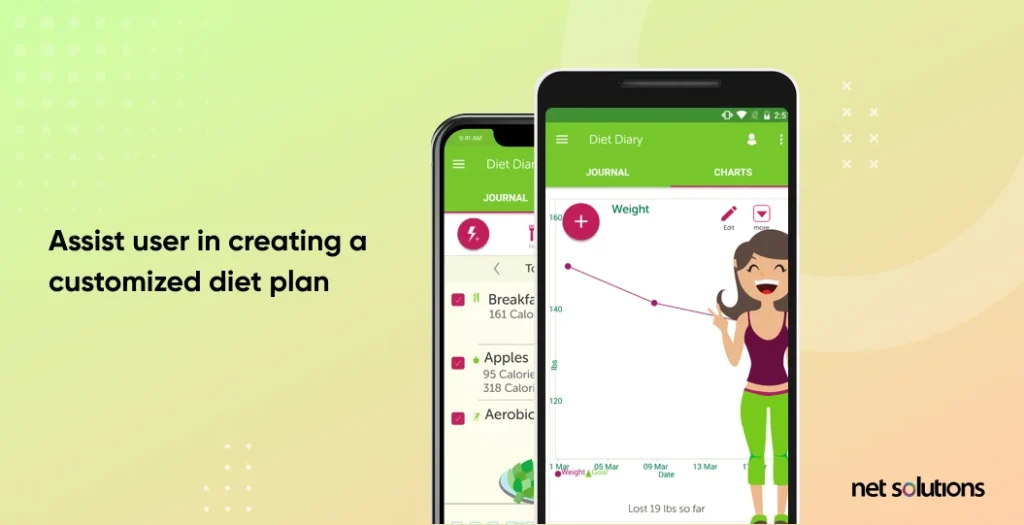
It should ideally give the option to pick the ingredients and help the users choose the recipe per their requirements. This feature includes simple and affordable options in the app by suggesting the food that fits in your users’ pockets. This feature also considers preferences, food intolerance, specific requirements, or allergies. You could even include shopping lists, resources, and recipes when you plan on how to build a fitness app. MyFitnessPal is an excellent example of a fitness app with almost all these features and indicates the amount of water consumed and other personal variables.
2. Push Notification System & Reminders
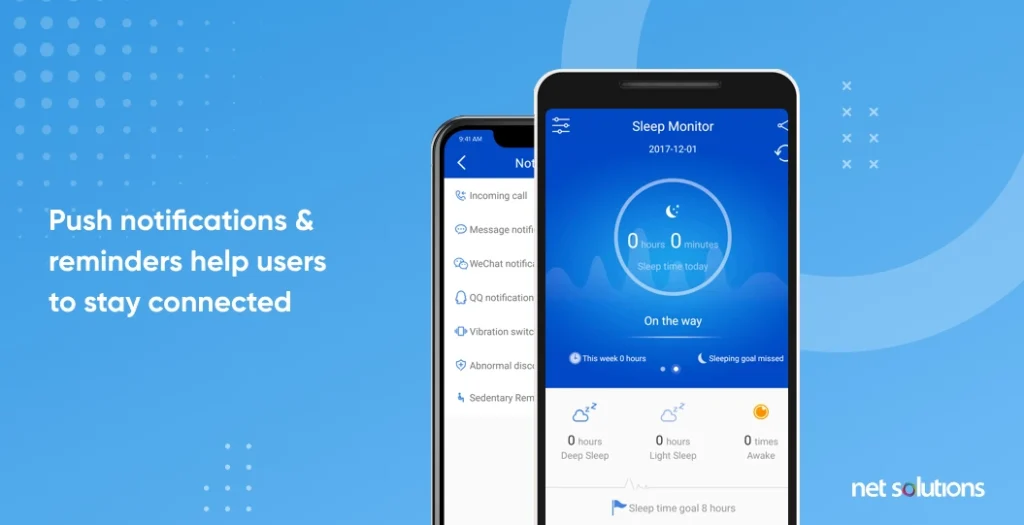
Any individual working out consistently will never wish to miss a session. In any case, staying aware of the bustling lives does slip one’s mind. In such cases, a pop-up message from an application can be beneficial to remembering your exercise session.
But take care that the push notification system works as a double-edged sword. By sending too many push notifications, you may annoy users who will leave the app and never wish to return.
3. Social Sharing
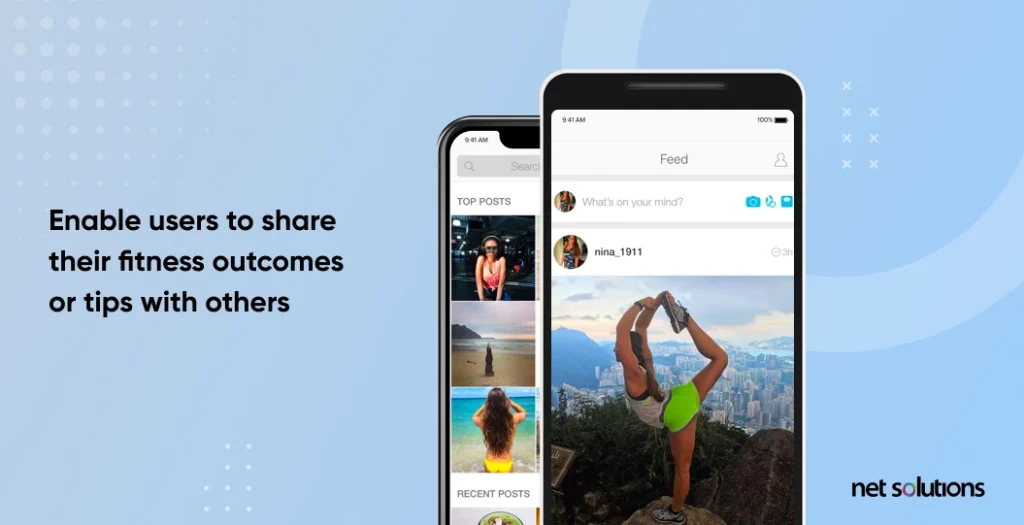
Social sharing is one of the essential features of the fitness app that startups can include in their fitness app. The community-based feature allows users to compete with friends and family in various difficulties and activities. Users love sharing their outcomes with friends because it helps them stay motivated and feel energized with new accomplishments.
This component can offer a platform to associate with like-minded people. It enables users to exchange tips and share their accomplishments with individual users. Additionally, this factor spurs them to accomplish new goals and work more steadily. We respect your privacy. Your information is safe.
4. Geolocation
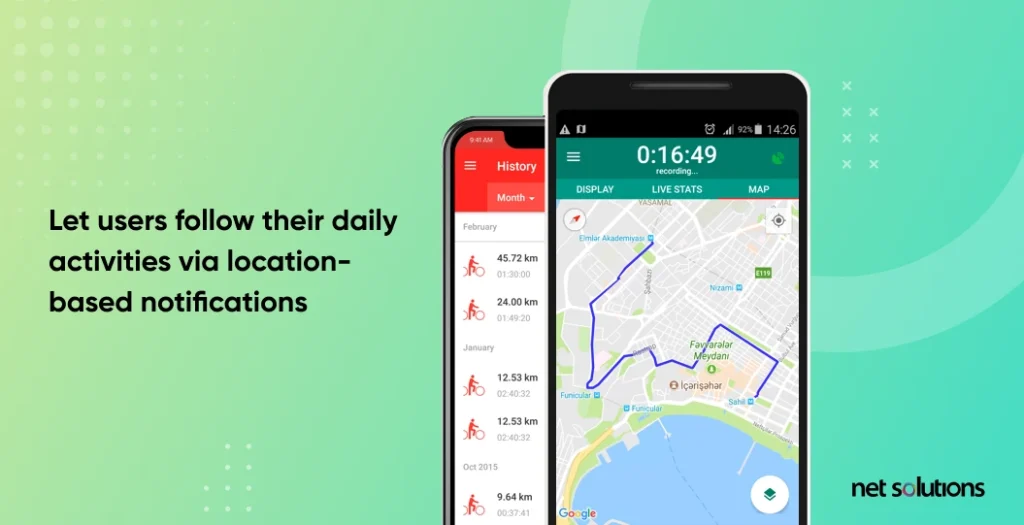
This feature enables users to follow their walking tracks and record workouts. By leveraging this platform, your fitness tracking app can make a powerful space in its users’ hearts, enabling them to track their fitness activities with time. Geolocation not only helps to send appropriate location-based notifications to the users but also helps them recall their activities accurately in the context of their desired location. This component is precious for outdoor enthusiasts.
5. Gamification
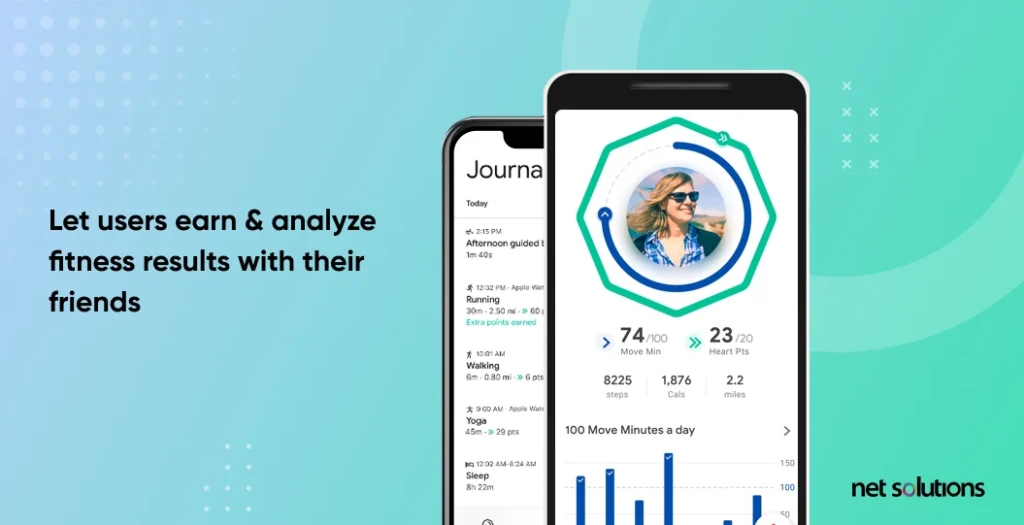
How about adding gamification to a fitness app? It’s a great feature to spur the formation of habits. With the concept of gamification, you can effortlessly add fun factors to your app processing, making it more user-friendly and engaging. While playing games is fun, if the games include competing with other users, they become even more exciting. Startups can boost user retention by including various components like rewards, leaderboards, badges, and progress bars. So, let your users earn and analyze results with their companions.
6. Wearable Device Integration
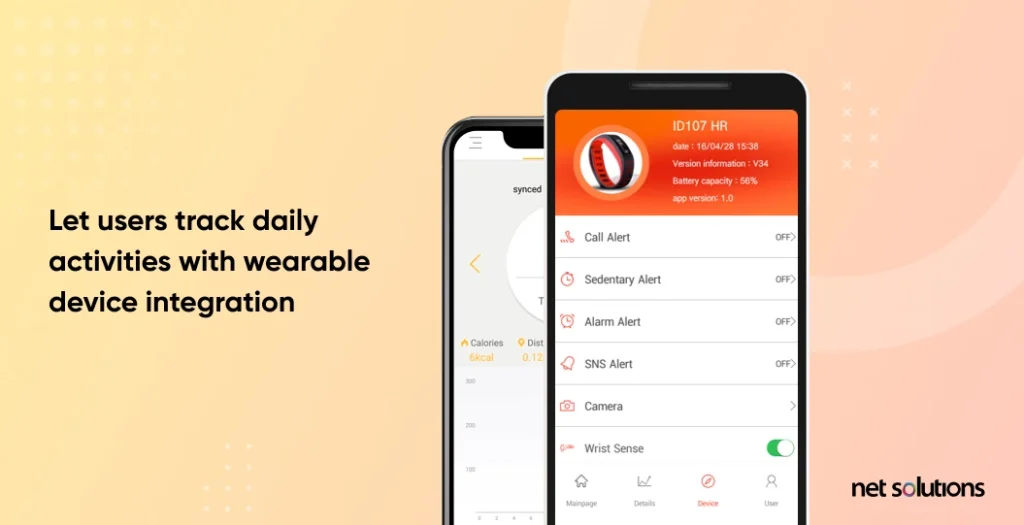
By integrating wearable devices into the fitness app, users stay connected with various external gadgets properly. Users manage to track their activities and exercise schedule. Moreover, they can look at their workout data by week, month or year and reach their fitness goals.
Your application can interface with several trackers, as could be allowed only if you integrate wearables. You could use Apple’s HealthKit or Google Fit for capacity and particular wearable producers’ APIs to link devices to your app.
7. Goals and Tracker
This must-have feature is highly recommended for startups who want to create an app that helps users track workouts. An application that highlights objectives for the users has a winning advantage as it spurs them to go for the better. The above component allows the users to compare their actual performance with their goals to gauge the viability of their plan.
This feature allows users to check their total steps for an entire day and calories burned while walking, running, and cycling. They can even monitor their sleep, food, and water intake. Thus, considering this feature, you can make your fitness app unique from the other apps.
8. Virtual Coaches
Hiring personal coaches can be very expensive in real life. So, creating a fitness app and offering personalized virtual coaching can work for you. This can bring a lot of knowledge to users. Coaches even provide special diets and workouts.
9. Video & Live Streaming
Videos work exceptionally well for workouts, meditation, yoga, and live streaming helps foster a community feeling. On a special payment, you can even offer video tutorials on demand. When you build a fitness app, educational material can be given to users in written and video form.
10. Barcode Scanner
This is an exciting feature when deciding how to build a fitness app. It especially helps in n nutrition and food tracking apps. Users can scan the barcode on packaged foods with their smartphones. That helps them know their food’s nutritional value – the value is automatically uploaded to the phone.
Top Fitness Apps in 2021 – Global Data
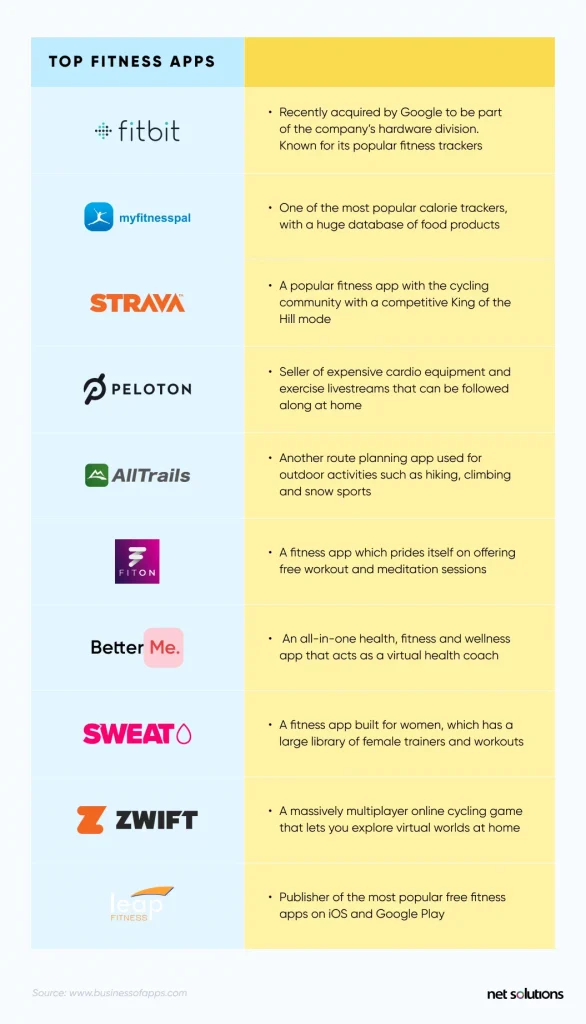
Top Fitness Apps in Revenue (October 2021)
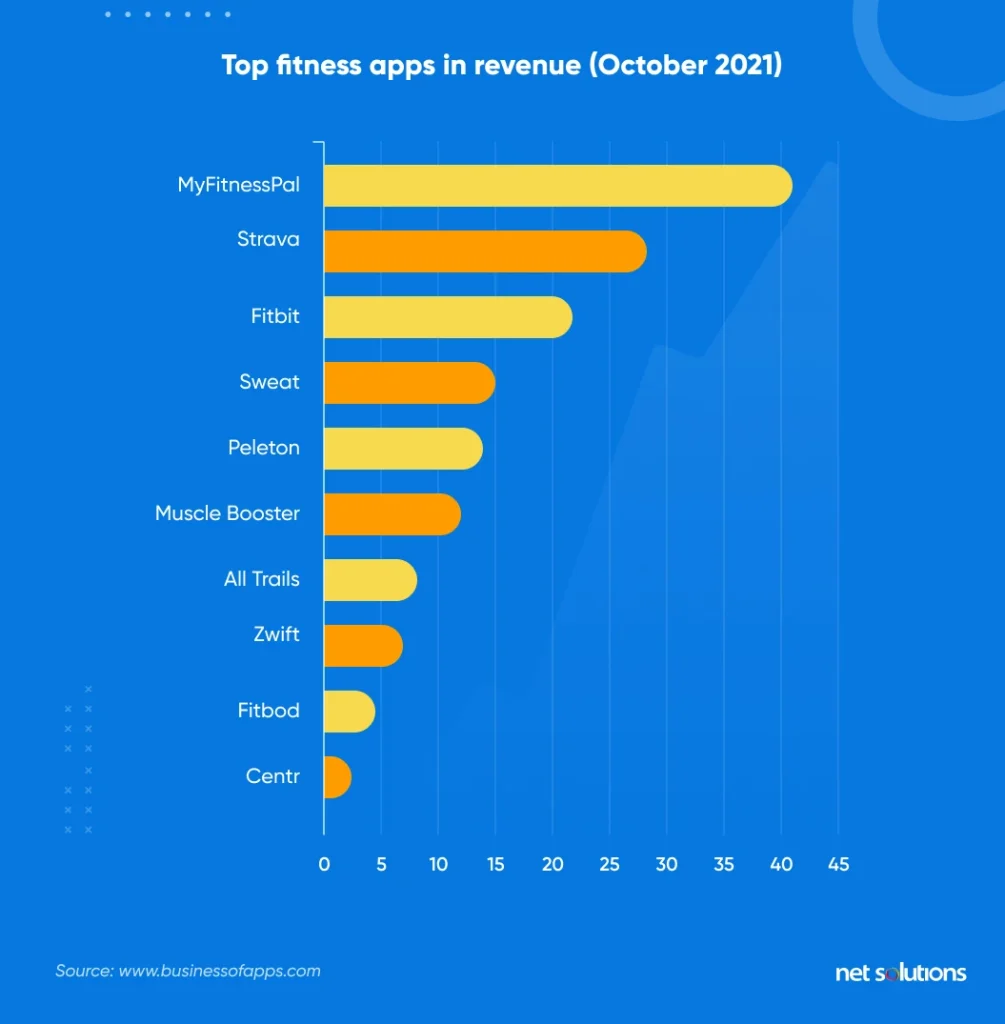
Frequently Asked Questions
When you decide how to build a fitness app, you should have clarity on the subscription models. Fitness apps can earn money through a recurring subscription model. Plus, you can have added advanced features that come with additional funds.
Most research has shown that people with fitness apps are more likely to exercise during their free time than those who don’t have apps. Apps somehow make it easier for people to overcome barriers to exercise. Fitness apps work even better when personalized per users’ needs and goals.
Fitness apps often do not respond well to GPS connectivity, which can deter users. Drained phone batteries, too much data to handle, and a lack of community support can sometimes be trouble spots for users.
That’s an ongoing debate for most mobile app services and solutions, and fitness apps are no exception. Fitness apps can track your movement, whereabouts, and personal details if security is not taken care of while building the fitness app. In the case of vague privacy policies, it can be a problem for users.

